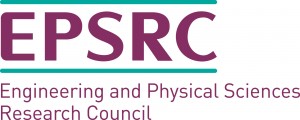The interaction between light and matter is at the basis of very important biological, chemical and physical processes. Light can trigger or inhibit reactions and propagates at the highest speed known to mankind. Technological advances have allowed reducing the dimensions of the components of devices to the nanometer scale, entering the realm where intriguing quantum mechanical effects come into play. We are now able to manipulate matter at the atomic level and generate single photons, the smallest constituents of light, on-demand. The next revolution in communication is expected to take place by implementing nanoscale quantum devices where light-matter interaction is engineered such that information can be stored in single photons that can propagate between optical cavities within a photonic network. Solid-state single-photon sources are expected to be the building blocks of novel architectures that will allow the implementation of unprecedented fast computation algorithms and secure communication, given their scalability and possibility of on-chip integration. Today’s technology allows controlling the emission of single photons, their polarization, colour and their propagation. However, several challenges are still limiting the implementation of quantum information technology in everyday life: the emitted photons only preserve their properties on a very short time-scale, often require the emitters to be at cryogenic temperatures, to be excited by external laser sources, and networks where information can be efficiently stored and shared are still lacking.
Our research group investigates light-matter interaction at the nanoscale with the aim of both unveiling fundamental quantum phenomena and fabricating novel devices with added quantum functionalities. Our research activities cover the electromagnetic simulation, fabrication and optical characterisation of quantum devices for future computation and communication quantum technology, based on single photons on a chip. The fabrication of the devices is carried out in-house at the Southampton Nanophotonics Centre, where we have access to state-of-the-art facilities for electron-beam lithography, dry and wet etch, scanning electron and atomic force microscopy and dielectric and metallic layer deposition.
We gratefully acknowledge financial support from:






